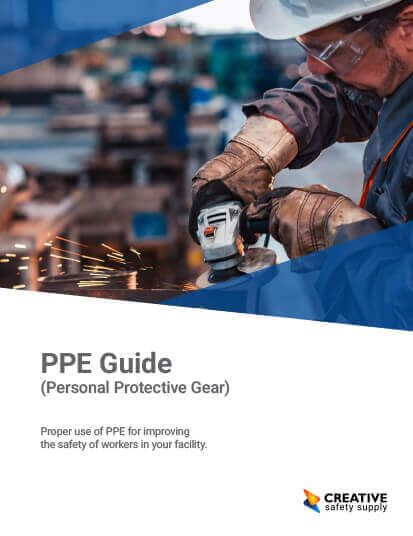
An important part of completing a hazard assessment of a facility is to understand the electrical risks. Electrical hazards pose the risk of arc flash causing electrocution, severe burns, permanent eyesight, and hearing damage, and can even be fatal in some cases. Things to look for during the assessment include outlets too close to conductors, torn or frayed wires, improper use of lockout devices, overloading circuits, and more. Electrocution can also be a result from arc flash, along with severe burns, permanent auditory damage, and permanent eyesight damage.
There is PPE that is specifically designed to protect the wearer from electrocution and electric shock and will always include hearing protection, leather footwear, and safety goggles. Required personal protective equipment for electrical hazards are broken down into the following four categories, per the NFPA 70E Standards.
- PPE Category 1: This category is meant for instances with the lowest level of electrical risk. Required PPE includes leather gloves, a hard hat, and arc-rated pants, long-sleeved shirt, and face shield.
- PPE Category 2: The next level of protection requires all PPE be arc-rated, save for the leather gloves. This includes a balaclava or helmet, a face shield, long-sleeved shirt, pants, and a jacket.
- PPE Category 3: One step up, PPE for this category also must be arc-rated, save for the leather gloves, and includes a balaclava, a flash suit hood, a long-sleeved shirt, pants, flash suit paints, and a flash suit jacket.
- PPE Category 4: This category is for instances with the highest level of electrical risk and could possibly result in death. It is required to wear a balaclava, a flash suit hood, gloves, a long-sleeved shirt, paints, flash suit paints, and a flash suit jacket, all arc-rated.
Signs and other forms of visual communication should be used in the area of the hazard letting workers know of the risk and the proper PPE that should be donned.
Similar Questions
- What hazards do PPE protect from?
- What are different types of PPE?
- What PPE is commonly used in construction sites?
- What is PPE?
- What are different types of hand protection?
- What PPE is recommended for chemical hazards?
- Can PPE be shared, reused, or altered?
- What situations require PPE?
- Who regulates PPE?
